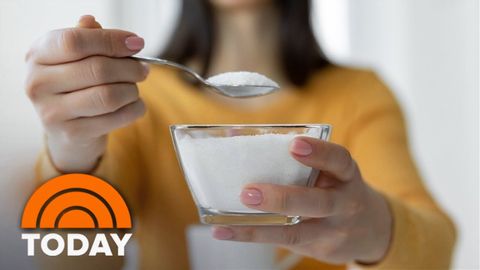砂糖は新しいタバコ?新しい警告ラベルを目にするかもしれない理由 (Is sugar the new cigarettes? Why you may see new warning labels)
VoiceTube が 2024 年 06 月 13 日 に投稿  この条件に一致する単語はありません
この条件に一致する単語はありませんUS /ˈprɑsˌɛs, ˈproˌsɛs/
・
UK /prə'ses/
- v.t.(コンピュータの)データを処理する;処理する;処理する;一連の工程を経る;加工する : 加工処理する;理解する
- n. (c./u.)手続き;一連の行為;方法;訴訟手続き;プロセス (コンピューター)
US /ˈrek.əɡ.naɪz/
・
UK /ˈrek.əɡ.naɪz/
- v.t.(~が本当であると)認める : 受け入れる;(重要性を)認める;法的権威を尊重する;公にその人の貢献を称賛する;認識する、認知する
US /ˌrɛkəˈmɛnd/
・
UK /ˌrekə'mend/
US /ˌdaɪəˈbitɪs, -tiz/
・
UK /ˌdaɪəˈbi:ti:z/
- n. (c./u.)糖尿病;1型糖尿病;2型糖尿病;妊娠糖尿病
エネルギーを使用
すべての単語を解除
発音・解説・フィルター機能を解除
